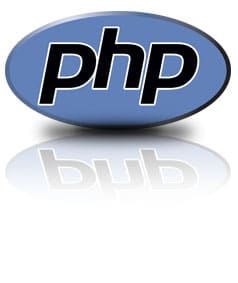Introduction 2
MySQL works on many different system platforms, including AIX, BSDi, FreeBSD, HP-UX, eComStation, i5/OS, IRIX, Linux, Mac OS X, Microsoft Windows, NetBSD, Novell NetWare, OpenBSD,OpenSolaris, OS/2 Warp, QNX, Solaris, Symbian, SunOS, SCO OpenServer, SCO UnixWare, Sanos and Tru64. A port of MySQL to OpenVMS also exists.
MySQL is written in C and C++. Its SQL parser is written in yacc, and a home-brewed lexical analyzer. Many programming languages with language-specific APIs include libraries for accessing MySQL databases. These include MySQL Connector/Net for integration with Microsoft's Visual Studio (languages such as C# and VB are most commonly used) and the JDBC driver for Java. In addition, an ODBC interface called MyODBC allows additional programming languages that support the ODBC interface to communicate with a MySQL database, such as ASP orColdFusion. The HTSQL - URL-based query method also ships with a MySQL adapter, allowing direct interaction between a MySQL database and any web client via structured URLs.
As of April 2009, MySQL offered MySQL 5.1 in two different variants: the open source MySQL Community Server and the commercial Enterprise Server. MySQL 5.5 is offered under the same licences. They have a common code base and include the following features:
• A broad subset of ANSI SQL 99, as well as extensions
• Cross-platform support
• Stored procedures
• Triggers
• Cursors
• Updatable Views
• Information schema
• Strict mode (ensures MySQL does not truncate or otherwise modify data to conform to an underlying data type, when an incompatible value is inserted into that type)
• X/Open XA distributed transaction processing (DTP) support; two phase commit as part of this, using Oracle's InnoDB engine
• Independent storage engines (MyISAM for read speed, InnoDB for transactions and referential integrity, MySQL Archive for storing historical data in little space)
• Transactions with the InnoDB, and Cluster storage engines; savepoints with InnoDB
• SSL support
• Query caching
• Sub-SELECTs (i.e. nested SELECTs)
• Replication support (i.e. Master-Master Replication & Master-Slave Replication) with one master per slave, many slaves per master, no automatic support for multiple masters per slave.
• Full-text indexing and searching using MyISAM engine
• Embedded database library
• Unicode support (however prior to 5.5.3 UTF-8 and UCS-2 encoded strings are limited to the BMP, in 5.5.3 and later use utf8mb4 for full unicode support)
• ACID compliance when using transaction capable storage engines (InnoDB and Cluster)
• Partitioned tables with pruning of partitions in optimizer
• Shared-nothing clustering through MySQL Cluster
• Hot backup (via mysqlhotcopy) under certain conditions
• Multiple storage engines, allowing one to choose the one that is most effective for each table in the application (in MySQL 5.0, storage engines must be compiled in; in MySQL 5.1, storage engines can be dynamically loaded at run time):
• Native storage engines (MyISAM, Falcon, Merge, Memory (heap), Federated, Archive, CSV, Blackhole, Cluster, EXAMPLE, Maria, and InnoDB, which was made the default as of 5.5)
• Partner-developed storage engines (solidDB, NitroEDB, ScaleDB, TokuDB, Infobright (formerly Brighthouse), Kickfire, XtraDB, IBM DB2). InnoDB used to be a partner-developed storage engine, but with recent acquisitions, Oracle now owns both MySQL core and InnoDB.
• Community-developed storage engines (memcache engine, httpd, PBXT, Revision Engine)
• Custom storage engines
• Commit grouping, gathering multiple transactions from multiple connections together to increase the number of commits per second. (PostgreSQL has an advanced form of this functionality)
The developers release monthly versions of the MySQL Server. The sources can be obtained from MySQL's website or from MySQL's Bazaar repository, both under the GPL license.






























